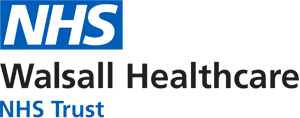Page title
Every endoscopic procedure can be associated with some discomfort but there are multiple options you have to minimise this.
All the relevant options for your procedure can be found on the information leaflets sent to you in the post. You can always discuss the different options with the nursing staff to aid you in deciding which the best option for you is.
Throat spray
This is a local anaesthetic which numbs the throat, this is used in diagnostic gastroscopy in order to minimise discomfort, however can also be used in other therapeutic procedures too. With the throat spray you will be completely awake during the procedure, whilst you may be bloated and feel uncomfortable, it should not be painful. Gastroscopies are very quick tests and tend to take 5-10 minutes; the spray will have an effect for approximately one hour. After having the gastroscopy with just the spray you are able to go home unaccompanied and drive. You have no lasting effects and can continue with your daily routine.
Sedation
The sedation that we use is a form of conscious sedation; this means that you will still be awake during the procedure. The aim of the sedation that we give is to relax patients, some people may feel slightly drowsy, but this is not always the case. The medication we use is called Midazolam and is given as an injection via an intravenous catheter (IV); it is not intended to make you go to sleep like a general anaesthetic.
Sedation can provide you with a more comfortable experience throughout your stay in endoscopy, especially if you are anxious. However it is important to know that there are limitations associated with this medication. Following sedation you have to be accompanied by a responsible adult for a minimum of 12 hours, therefore you will need to bring a friend or relative (who is able to stay with you) to the endoscopy department. Additionally, for 24 hours you are not permitted to drive, operate heavy machinery, sign any legal documents or consume any alcohol.
Depending on various risk factors such as age, patients who suffer with any breathing problems such as COPD or sleep apnoea, we need to be extra cautious with the amount of sedative that can be given. This does not mean that you are not able to have the sedation, but that you might need to have a lower dose. This can be discussed with you by your endoscopist on the day of the procedure.
Analgesia
The Analgesia (pain killer) we use is called Fentanyl; we tend to use it prophylactically (as prevention) on patients who are undergoing lengthy or therapeutic procedures. This medication has similar side effects to Midazolam in that for 24 hours you are not permitted to drive, operate heavy machinery, sign any legal documents or consume any alcohol. However you are not required to have anyone with you for the 12 hour period that you would need in the way you would with Midazolam.
Gas and air (Entonox)
If you are having a colonoscopy of flexible sigmoidoscopy you can be offered gas and air, this is commonly associated as pain relief in labour. If you have gas and air you will be advised by the nursing staff how to use it, however you are in control, you will be handed a mouthpiece to use as and when you require. You will be fully awake during this, but it can make you feel a bit lightheaded after prolonged use. Therefore you are not able to drive for one hour following the procedure. After the hour there should be no lasting side effect so you can go about your daily routine.
General anaesthetic
This is when an anaesthetist will put you completely to sleep. We do not do this on our department; however it can be done in theatre. This is reserved for very complicated procedures, most of which are likely to take a long time, and is very rarely appropriate for shorter diagnostic procedures. If you feel that you will not be able to have a procedure done using one of the previous methods, you will need to discuss this option with your referring consultant before attending the endoscopy department. It would need to be pre-planned in advance, because it is not routinely done and we may need to look into other alternatives.
